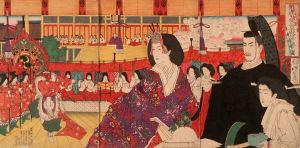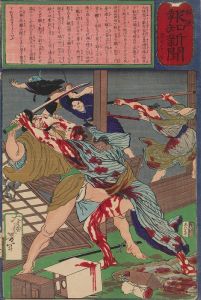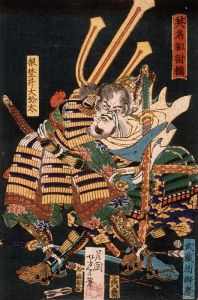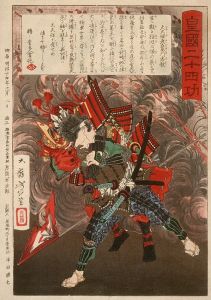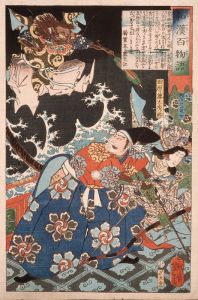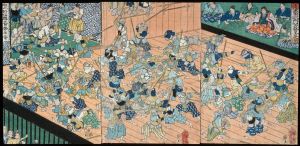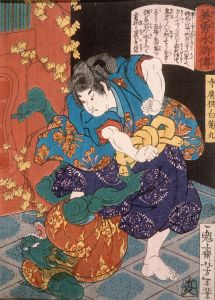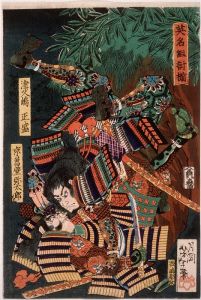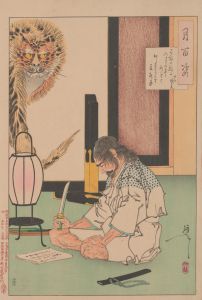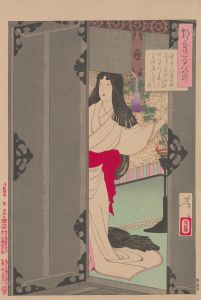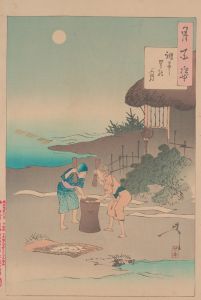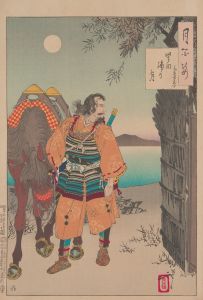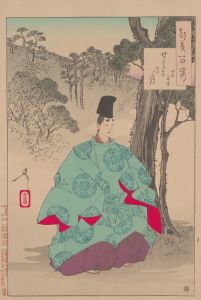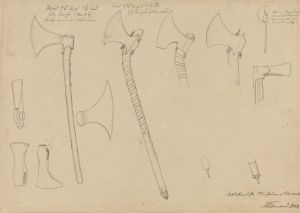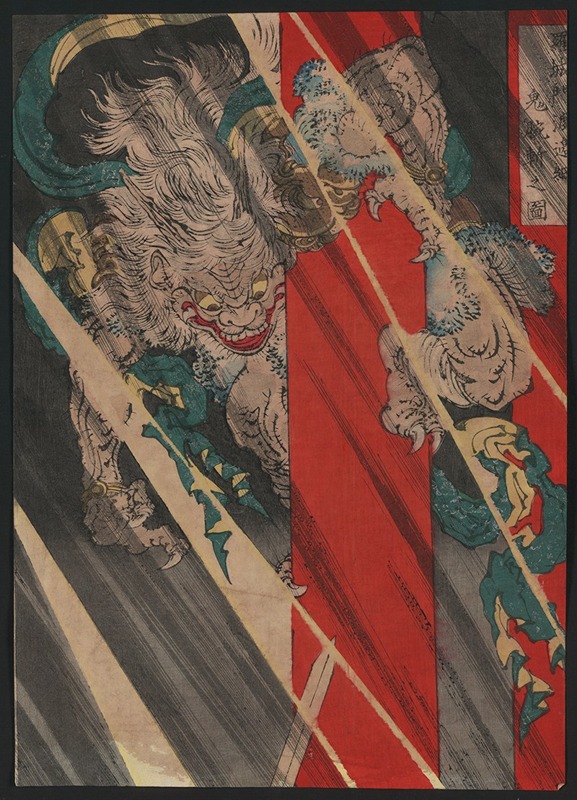
Rajōmon watanabe no tsuna oni ude kiru no zu
A hand-painted replica of Tsukioka Yoshitoshi’s masterpiece Rajōmon watanabe no tsuna oni ude kiru no zu, meticulously crafted by professional artists to capture the true essence of the original. Each piece is created with museum-quality canvas and rare mineral pigments, carefully painted by experienced artists with delicate brushstrokes and rich, layered colors to perfectly recreate the texture of the original artwork. Unlike machine-printed reproductions, this hand-painted version brings the painting to life, infused with the artist’s emotions and skill in every stroke. Whether for personal collection or home decoration, it instantly elevates the artistic atmosphere of any space.
"Rajōmon Watanabe no Tsuna Oni Ude Kiru no Zu" is a woodblock print by the renowned Japanese artist Tsukioka Yoshitoshi (1839–1892). This artwork is part of Yoshitoshi's celebrated series Shinkei Sanjūrokkaisen (New Forms of Thirty-Six Ghosts), which was published between 1889 and 1892. The series is notable for its vivid depictions of supernatural themes, folklore, and historical legends, blending traditional Japanese storytelling with Yoshitoshi's innovative artistic style.
The print illustrates a famous episode from Japanese folklore involving the legendary samurai Watanabe no Tsuna, a retainer of the warrior Minamoto no Yorimitsu (also known as Raikō). According to the tale, Tsuna encounters a fearsome oni (demon) at the Rashōmon gate in Kyoto. The oni attempts to drag Tsuna away, but the samurai bravely fights back and manages to sever the demon's arm with his sword. The print captures the dramatic moment of Tsuna's confrontation with the oni, emphasizing the tension and supernatural elements of the story.
Yoshitoshi's depiction is characterized by his masterful use of color, line, and composition to convey the intensity of the scene. The samurai is shown in a dynamic pose, wielding his sword with determination, while the oni's grotesque features and severed arm heighten the sense of otherworldly menace. The background often includes atmospheric details, such as swirling clouds or a darkened sky, to enhance the mood of the piece.
This work reflects Yoshitoshi's deep engagement with traditional Japanese culture and his ability to reinterpret classic themes for a late 19th-century audience. It also demonstrates his technical skill as a woodblock print artist during the Meiji period, a time when the art form was undergoing significant changes due to the influence of Western techniques and the decline of the ukiyo-e tradition.
"Rajōmon Watanabe no Tsuna Oni Ude Kiru no Zu" remains an important example of Yoshitoshi's contribution to the preservation and revitalization of Japanese folklore through visual art. It continues to be admired for its artistic excellence and its role in keeping the stories of Japan's past alive for future generations.





